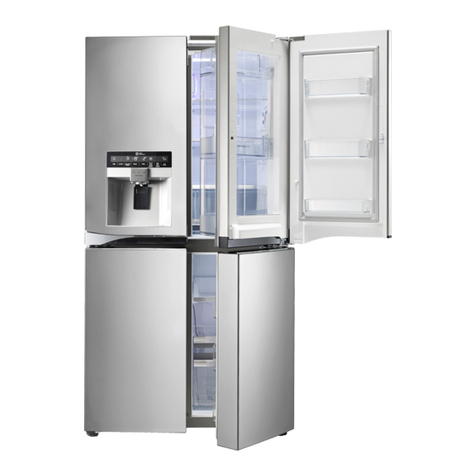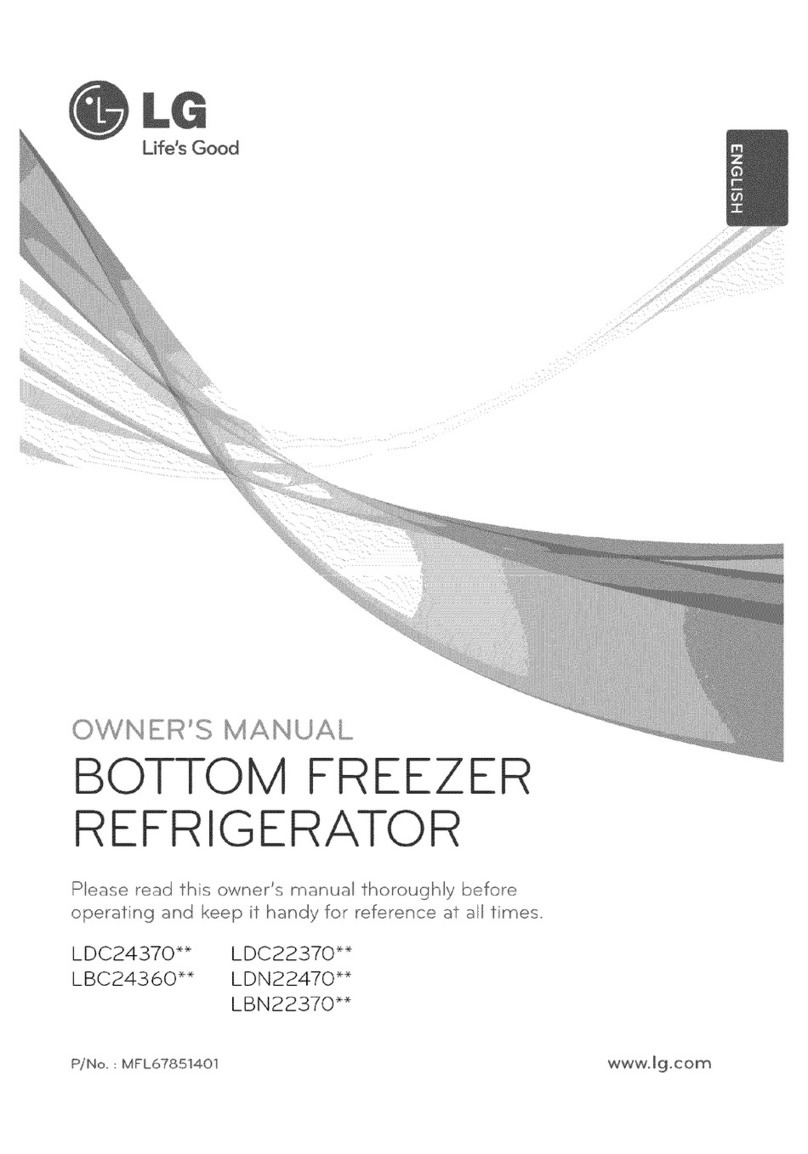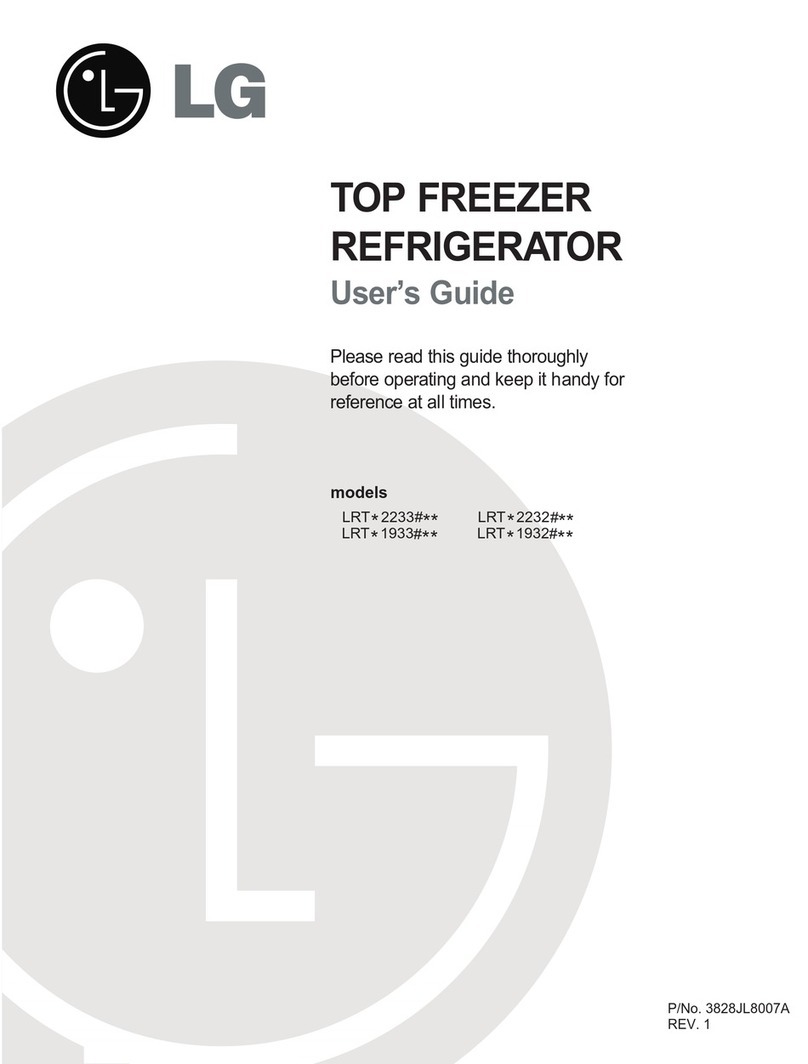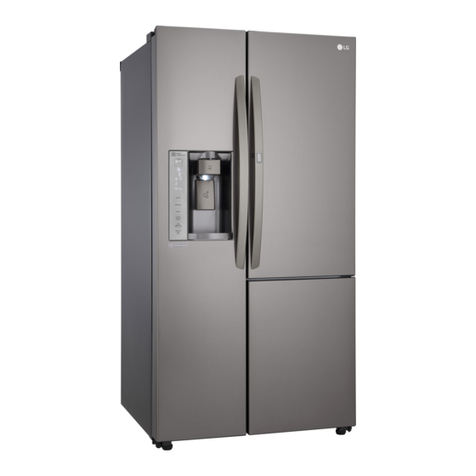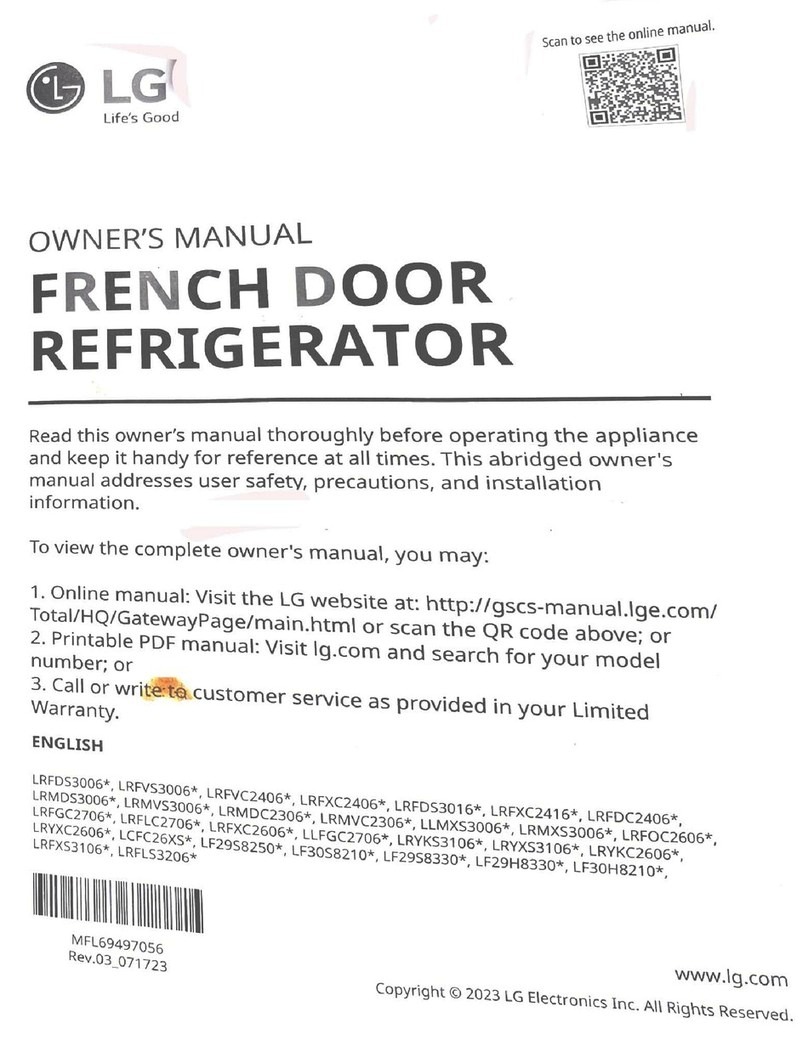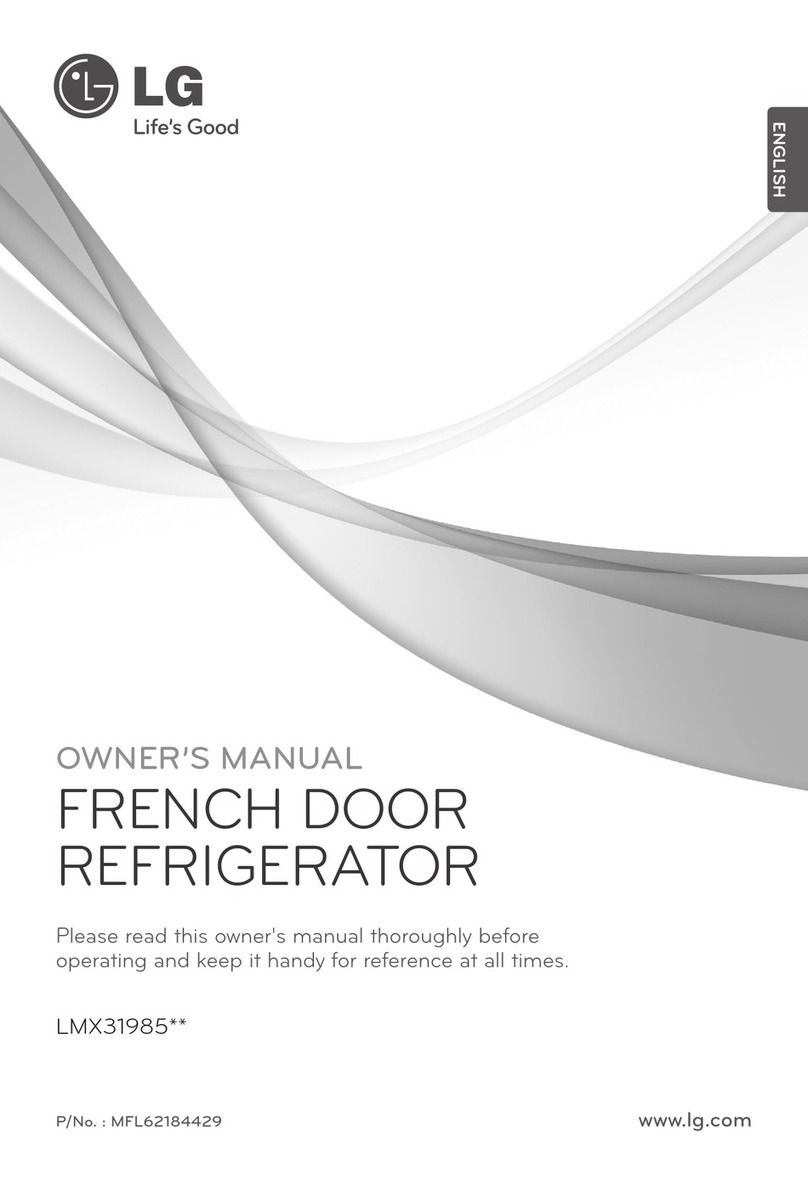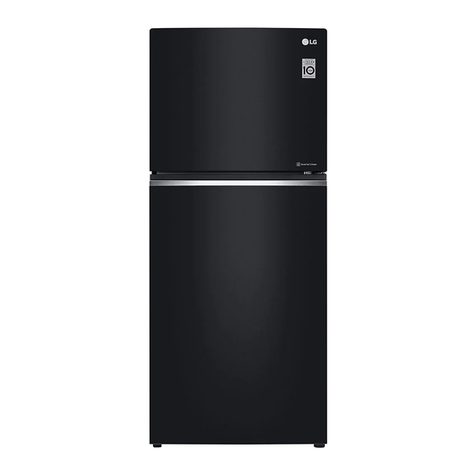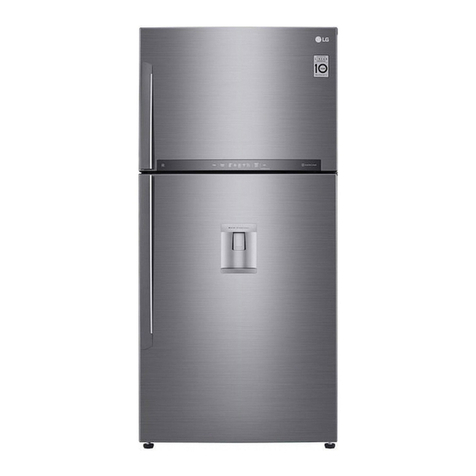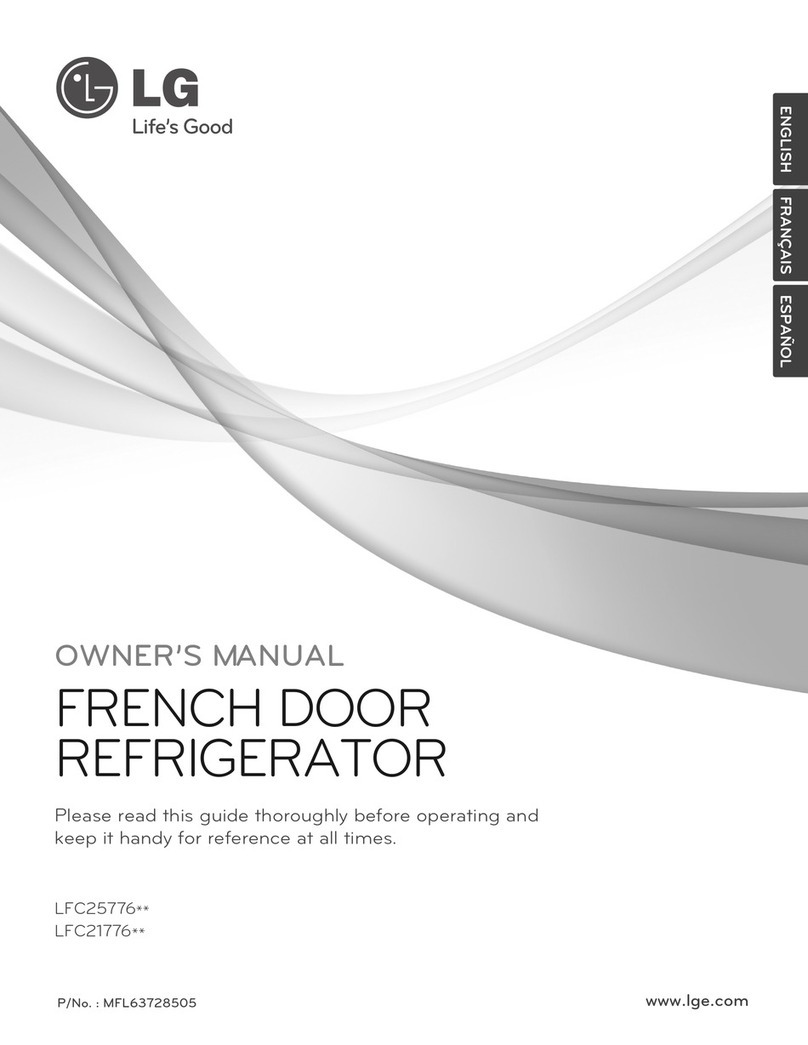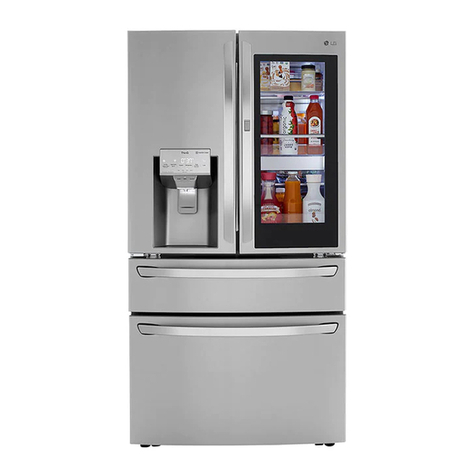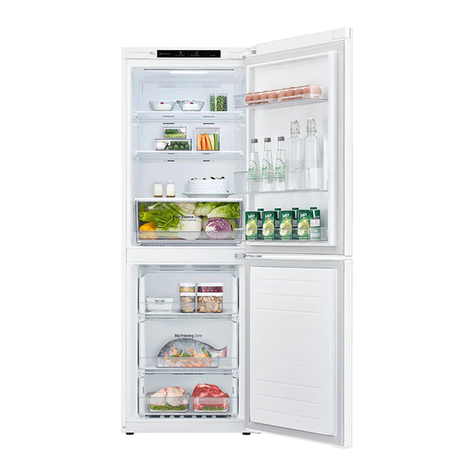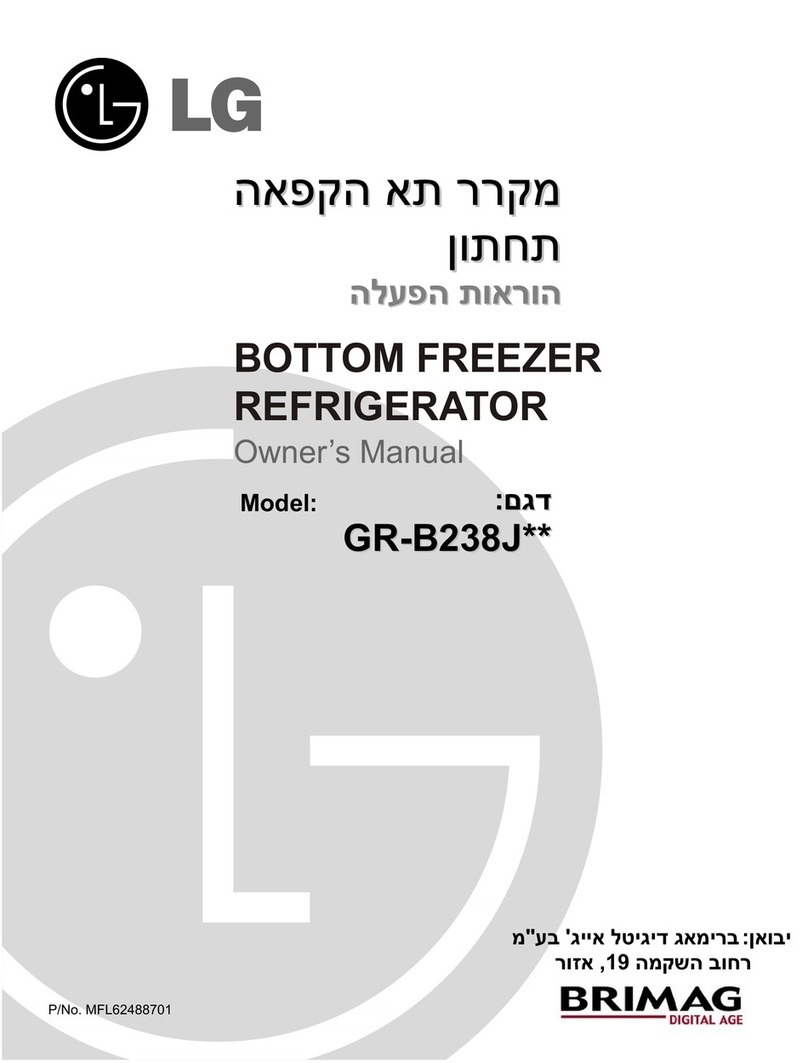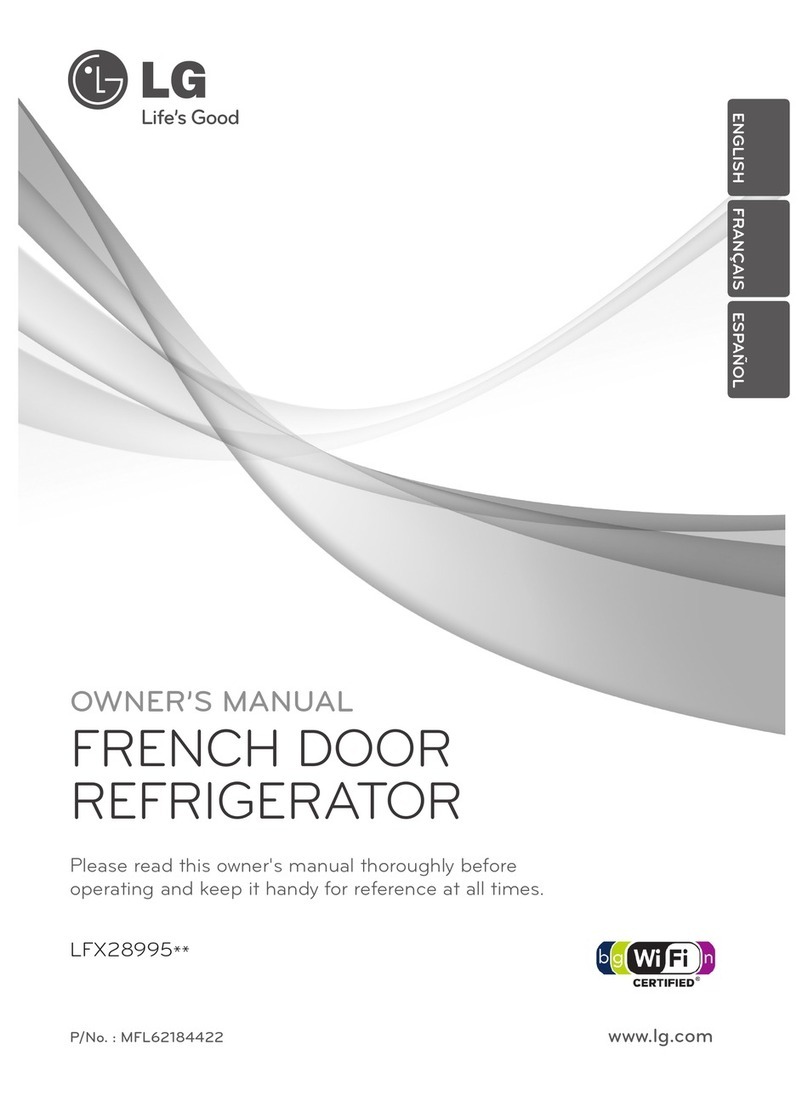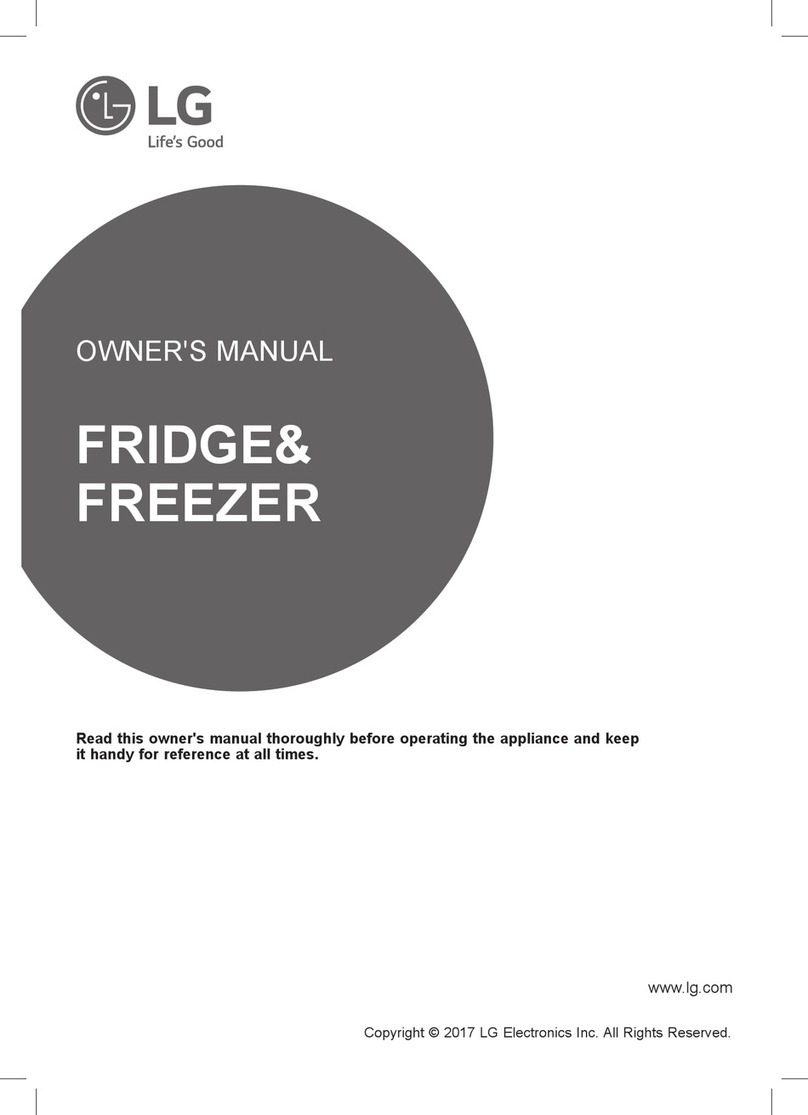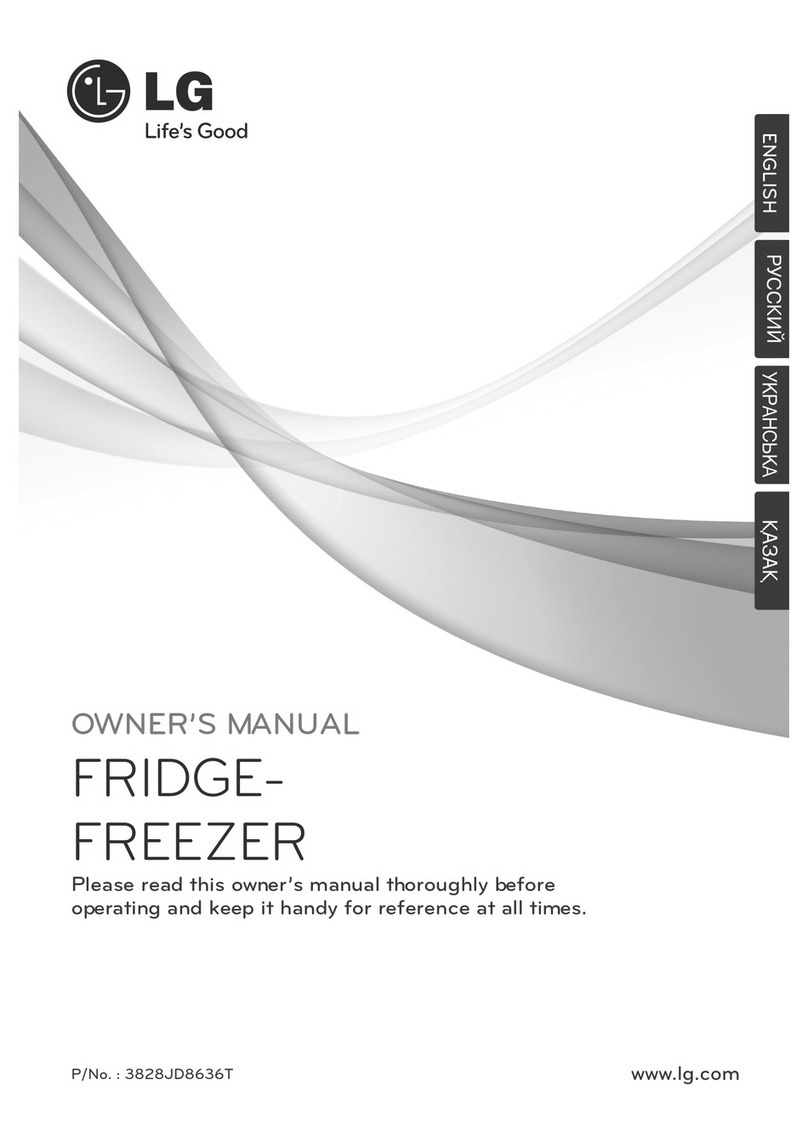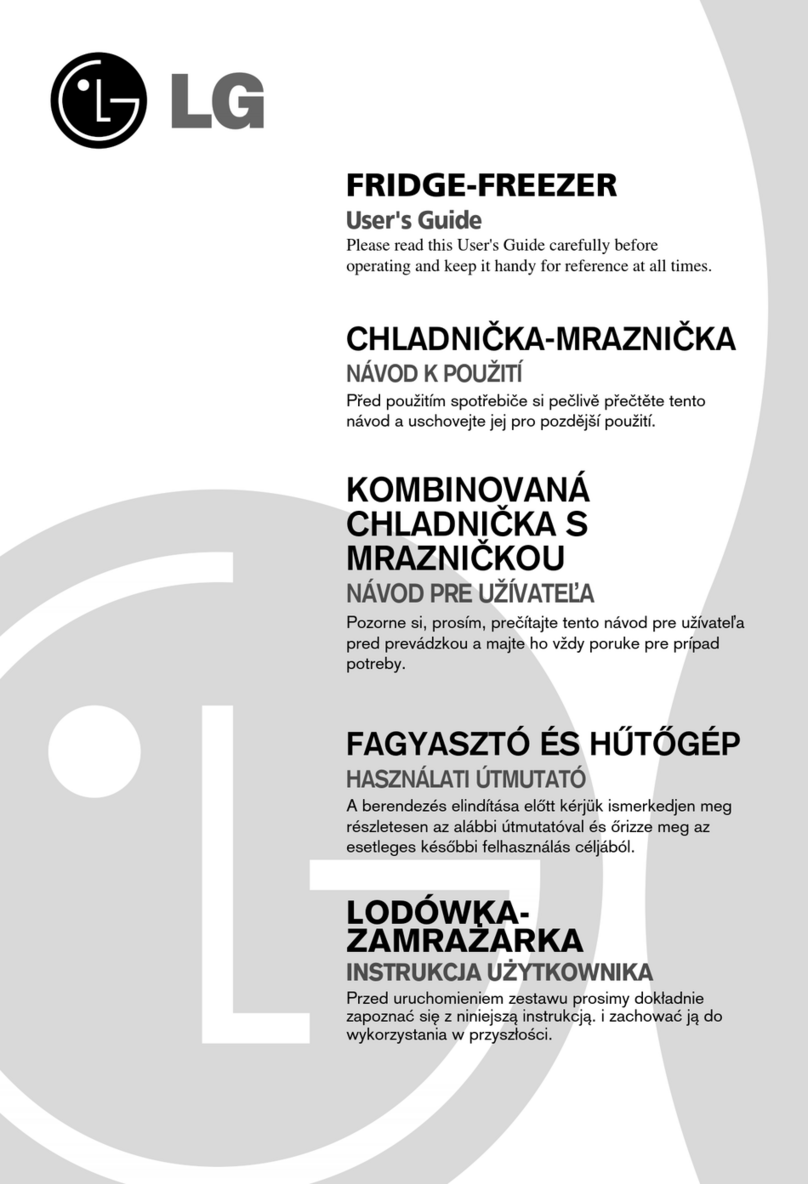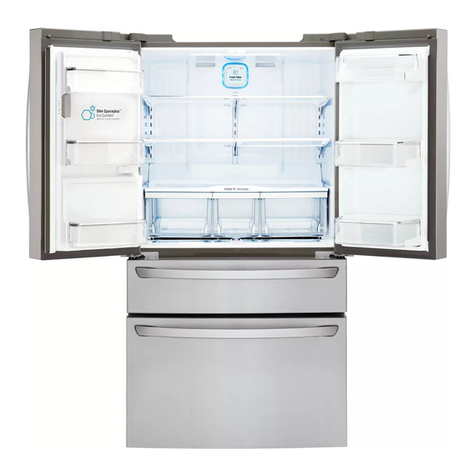
CONTENTS
SAFETY PRECAUTIONS ................................................................................................................. ............................... 2
1. SPECIFICATIONS ...................................................................................................... ................................................. 3
2. PARTS IDENTIFICATION ........................................................................................... ................................................. 5
3. DISASSEMBLY ........................................................................................................... ................................................. 6
REMOVING AND REPLACING REFRIGERATOR DOORS .................................................... ................................... 6
DOOR ............................................................................................................................. ............................................ 7
DOOR ALIGNMENT ..................................................................................................................... 7
FAN AND FAN MOTOR (EVAPORATOR) ........................................................... ....................................................... 8
DEFROST CONTROL ASSEMBLY ....................................................................... ..................................................... 8
LAMP ............................................................................................................................... ........................................... 8
AIR FILTER ................................................................................................................ ................................................ 9
MAIN PCB ............................................................................................................. ..................................................... 9
DISPENSER ......................................................................................................... ...................................................... 9
DISPLAY PWB REPLACEMENT ........................................................................ ........................................................ 9
FUNNEL REPLACEMENT ....................................................................................... .................................................. 10
SUB PWB FOR DISPENSER .............................................................................. ....................................................... 10
CAP DUCT REPLACEMENT ............................................................................... ...................................................... 10
CAP DUCT MOTOR REPLACEMENT ................................................................. ...................................................... 10
ICE CORNER DOOR REPLACEMENT .................................................................. ................................................... 10
ICEMAKER REPLACEMENT ................................................................................ ..................................................... 11
HOW TO REMOVE A ICE BIN ................................................................................. .................................................. 11
HOW TO INSERT A ICE BIN .............................................................................. ........................................................ 11
HOW TO REMOVE AND REINSTALL THE PULLOUT DRAWER ................................. ............................................ 12
WATER VALVE DISASSEMBLY METHOD .................................................................. .............................................. 13
FAN AND FAN MOTOR DISASSEMBLY METHOD .............................................. ..................................................... 13
PULL OUT DRAWER .................................................................................................... ............................................. 13
4. ADJUSTMENT .......................................................................................................................... ................................... 14
5. CIRCUIT DIAGRAM ...................................................................................................... .............................................. 15
6. TROUBLESHOOTINTG ........................................................................................ ...................................................... 16
7. PCB PICTURE ......................................................................................................... .................................................... 17
8. TROUBLESHOOTING WITH ERROR DISPLAY ..................................................... ................................................... 19
9. TROUBLESHOOTING WITH ERROR DISPLAY ..................................................... ................................................... 28
10. REFERENCE ............................................................................................................................. ................................ 37
11. COMPONENT TESTING INFORMATION ................................................................... .............................................. 43
12. TRBOUBLESHOOTING .............................................................................................. .............................................. 52
13. ICEMAKER OPERATING METHOD AND TROUBLESHOOTING .......................... ................................................. 65
14. DESCRIPTION OF FUNCTION & CIRCUIT OF MICOM ............................................. ............................................. 69
15. EXPLODED VIEW .......................................................................................................... ........................................... 71
................................................
SAFETY PRECAUTIONS
Please read the following instructions before servicing your refrigerator
1 Unplug the power before handling any elctrical componets
2 Check the rated current voltage and capacity
3 Take caution not to get water near any electrical components
4 Use exact replacement parts
5 Remove any objects from the top prior to tilting the product
.
..
.,,.
..
..
..
MULTI DUCT ................................................................................................................ .............................................. 9



